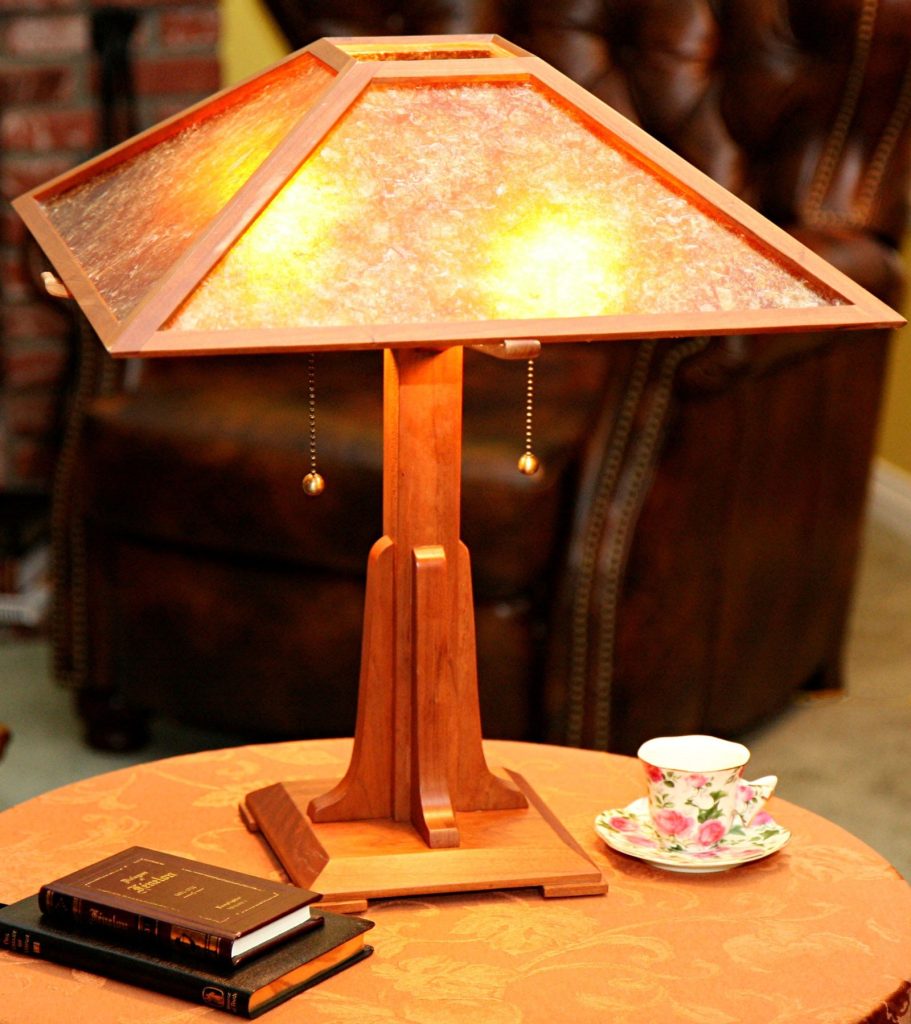I. Intro
A. Overview of arts and crafts lamps
Arts and crafts lamps are a unique and timeless addition to any home decor. These lamps are handcrafted with exceptional attention to detail, using natural materials like wood, metals, and glass. They are known for their simplicity, functionality, and intricate handmade details. Arts and crafts lamps come in various types and designs, including table lamps, floor lamps, pendant lamps, and wall sconces, with features like stained glass shades, hammered metal bases, nature-inspired motifs, and geometric patterns. Incorporating arts and crafts lamps into your home decor can create a warm and inviting ambiance, while adding a touch of elegance and sophistication.

B. Significance of handcrafted illumination in home decor
In today’s world of mass production and machine-made products, handcrafted items hold a unique appeal. Handcrafted illumination, in particular, adds a personal touch and a sense of authenticity to any space. The arts and crafts movement, which originated in the late 19th century, emphasized the value of handcrafted items and the importance of preserving traditional craftsmanship. Arts and crafts lamps showcase the skill and dedication of artisans, who meticulously create each piece with passion and expertise. By incorporating these lamps into your home decor, you not only support the artistry and craftsmanship of these individuals but also bring a sense of history and art to your living space.
II. History and Origins
A. The emergence of the arts and crafts movement
The arts and crafts movement emerged in the late 19th century as a response to the industrialization and mass production that characterized that era. Led by influential figures like William Morris and John Ruskin, this movement sought to bring back the value of craftsmanship and traditional techniques. It emphasized the importance of simplicity, functionality, and the use of natural materials. Arts and crafts lamps became a prominent feature of this movement, representing the ideals of handcrafted beauty and artistic integrity.
B. Influential figures in the movement
Several influential figures played a crucial role in the development and popularity of arts and crafts lamps. One such figure is Louis Comfort Tiffany, an American artist and designer known for his expertise in stained glass. Tiffany’s innovative techniques and unique designs revolutionized the lamp industry, with his stained glass shades becoming highly sought after. Another influential figure is Gustav Stickley, an American furniture maker who embraced the arts and crafts philosophy in his work. Stickley’s furniture designs, including lamps, were characterized by simplicity, functionality, and the use of natural materials, making a significant impact on the arts and crafts movement.

III. Characteristics of Arts and Crafts Lamps
A. Emphasis on simplicity and functionality
One of the defining characteristics of arts and crafts lamps is their emphasis on simplicity and functionality. These lamps often feature clean lines, unadorned surfaces, and minimalistic designs. The focus is on creating a visually pleasing yet practical lighting solution that seamlessly integrates into any interior space.
B. Use of natural materials like wood, metals, and glass
Arts and crafts lamps utilize natural materials like wood, metals, and glass to create a harmonious connection with nature. Wooden bases and frames provide a warm and organic touch, while metals like copper and bronze add a rustic and timeless appeal. Stained glass shades, crafted by skilled artisans, add a vibrancy and visual interest to the lamps, often featuring intricate patterns and motifs inspired by nature.
C. Intricate handmade details
Handmade details are a hallmark of arts and crafts lamps. Skilled artisans spend hours meticulously crafting each lamp, paying attention to every intricate detail. Whether it’s the hand-carved wooden base, the hammered metal accents, or the delicate leaded glasswork, these lamps showcase the artistry and craftsmanship that goes into their creation.

IV. Types and Designs
A. Table lamps, floor lamps, pendant lamps, and wall sconces
Arts and crafts lamps come in various types and designs, catering to different lighting needs and preferences. Table lamps are versatile and can be placed on bedside tables, desks, or side tables. Floor lamps provide ambient lighting and can serve as statement pieces in larger rooms. Pendant lamps are suspended from the ceiling and can be used to highlight specific areas or as decorative focal points. Wall sconces, mounted on walls, offer a stylish and space-saving lighting solution.
B. Stained glass shades, hammered metal bases, nature-inspired motifs, and geometric patterns
Arts and crafts lamps feature a range of unique designs and elements. Stained glass shades are a prominent feature, adding a touch of color and elegance. These shades often depict nature-inspired motifs, such as flowers, trees, and leaves, or geometric patterns that reflect the principles of the arts and crafts movement. Hammered metal bases provide a rustic and handcrafted feel, while intricate metalwork and embossing add depth and texture to the lamps.

V. Benefits and Tips for Incorporating Arts and Crafts Lamps in Home Decor
A. Creating a warm and inviting ambiance
One of the major benefits of incorporating arts and crafts lamps into your home decor is the warm and inviting ambiance they create. The soft and diffused light emitted through stained glass shades adds a gentle and comforting glow to any space. The warm tones of wood and the rustic charm of hammered metal bases further enhance the cozy and inviting atmosphere.
B. Timeless and unique style that complements various design themes
Arts and crafts lamps have a timeless and unique style that complements various design themes. Whether your home decor is traditional, rustic, modern, or eclectic, these lamps can seamlessly blend in and enhance the overall aesthetic. Their simplicity and natural materials make them versatile, adaptable, and able to withstand changing design trends.
C. Tips for choosing, placing, and DIY projects with arts and crafts lamps
When choosing arts and crafts lamps, consider the scale, proportion, and color scheme of your space. The lamp should complement the overall decor and not overwhelm the room. Placing these lamps strategically can create focal points and highlight specific areas, such as reading nooks or displays. Additionally, arts and crafts lamps can inspire DIY projects, allowing you to personalize and customize them to your liking. You can experiment with different shades, bases, or embellishments to create a truly one-of-a-kind piece that reflects your personal style.

In conclusion, arts and crafts lamps bring a sense of history, artistry, and authenticity to home decor. Their emphasis on simplicity, functionality, and the use of natural materials make them timeless and versatile. Whether you choose a table lamp, floor lamp, pendant lamp, or wall sconce, arts and crafts lamps can create a warm and inviting ambiance while adding a unique touch of elegance to any space. By incorporating these lamps into your home decor, you not only support the craftsmanship of artisans but also showcase your appreciation for the beauty of handcrafted illumination.


